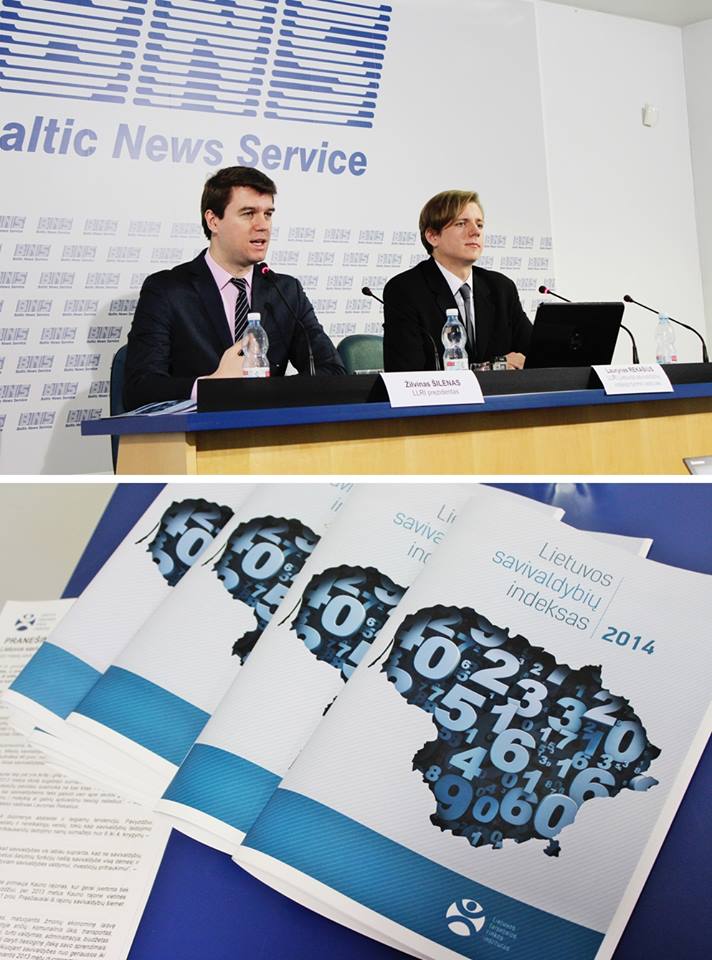 Of the seven city municipalities in this year’s Lithuanian Municipality Performance Index, Klaipėda was the highest scoring, whereas the lowest ranked was Šiauliai. Out of the 53 country municipalities, Kaunas finished in first place for the second consecutive year, while the Alytus municipality was at the bottom of the index. We can also observe a dangerous trend emerging in Lithuania, with municipal governments across the board sinking further and further into debt.
Of the seven city municipalities in this year’s Lithuanian Municipality Performance Index, Klaipėda was the highest scoring, whereas the lowest ranked was Šiauliai. Out of the 53 country municipalities, Kaunas finished in first place for the second consecutive year, while the Alytus municipality was at the bottom of the index. We can also observe a dangerous trend emerging in Lithuania, with municipal governments across the board sinking further and further into debt.
The Lithuanian Free Market Institute (LFMI) publishes their Lithuanian Municipality Index annually. The Index assesses the level of economic freedom in each municipality. Municipalities are assessed using indicators based on areas important to residents and investors, such as the effectiveness of social services and the levels of taxation respectively.
“Klaipėda, the winner, is attractive for businesses, as the municipality does not restrict competition, and also creates a good atmosphere for their residents, as the citizens have more choice in health or utilities providers. However, this does not mean there is no room for improvement. Klaipėda, like the majority of Lithuanian municipalities, should be concerned about its debt,” says LFMI President Žilvinas Šilėnas.
According to 2013 data, 42 Lithuanian municipality governments are deep in debt. During 2013, existing municipality government debt grew another 118 million Litas. Urban municipal debt averaged 55 percent, with regional debt averaging a slightly lower 46 percent of revenue. Around one third of the country’s municipalities were able to control their debt, with 18 of the municipalities decreasing their debt level during the year of 2013.
“The index shows that Šiauliai is also deep in debt, however it is a positive sign that the city has now started to improve on the 2013 results and reduce their debt. In the end, increasing debt levels and rising interest rates will, inevitably, be paid for by the residents through their taxes. If municipality governments continue to borrow money, we may see the day where municipalities will only be able to think about their debt repayments and simply cannot devote any money towards transporting children to school or funding street lights”, says LFMI expert Laurynas Rekašius, manager of the Lithuanian Municipality Index.
The Index‘s 2014 data, however, showed some positive trends. For instance, the municipality relinquished ownership of some abandoned buildings and unnecessary businesses, such as the municipal funeral homes. During 2013, the number of municipal funeral homes was reduced from eight to four, and the number of bookstores was reduced from 16 to 13.
“This is a very positive trend that shows that municipalities are increasingly aware that hair-dressing or bathing services are not a necessary function of municipalities. By reducing the burden of extra municipality functions, the municipalities can direct all their attention and effort to their direct work – effective governance and attracting investment,” says Rekašius.
Of the 53 regional municipal districts, Kaunas municipality led the Index for the second year, with strong scores in both the investment and social freedoms spheres. During the year of 2013, local investments in the Kaunas municipality increased by 29 percent, and welfare recipients declined by 11 percent. This year’s worst ranking municipal district is Alytus.
The Lithuanian Municipality Performance Index measures the economic freedom of people in each municipality. The index measures data from ten broad areas: utilities, transportation, education, health, social services, investments, taxes, asset management, administration and the budget. Each area consists of a series of indicators that are directly influenced by decisions of the municipality. The indicator values are scores ranging from 0 to 100, ranking the municipalities from worst to best. The 2014 Index is based on data collected from 2013.
See more in Lithuanian: http://www.llri.lt/lietuvos-savivaldybiu-indeksas-2014